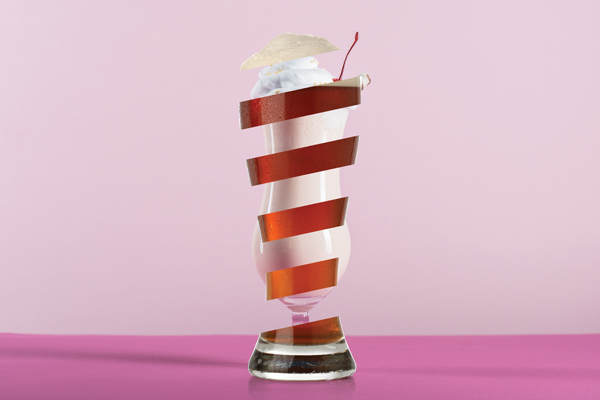

This article originally appeared in the September/October 2020 issue of Zymurgy Magazine
By Christiana Bockisch
The milkshake IPA—you might think craft beer has gone too far, or that it’s an abomination, but it doesn’t have to be! When I first heard the words “milkshake IPA” a couple of years ago, I cringed. My taste buds ran for cover. It sounded like a Leinenkugel fever dream. I had visions of a soupy IPA with a final gravity in the neighborhood of 1.025. After doing some reading, I found that the inventors of this concoction are Tired Hands Brewing of Pennsylvania and Omnipollo of Sweden.
I was intrigued that Tired Hands was involved in this. Tired Hands is an excellent brewery and where I had my first hazy IPA: Alien Church. I was instantly hooked. I have tried a few commercial examples of milkshake IPA from various breweries since first hearing about the style. A small handful are very good, but the majority I have tried have one common flaw: they are far too sweet. For a while, I stopped thinking about milkshake IPAs. At the time, I thought they were definitely a creative beer style, but it was not a style I was interested in brewing.
In June 2018, my aunt gave me about 10 pounds of homegrown Oregon strawberries, as she usually does. Not thinking much about milkshake IPAs at the time, I made a pale ale with them and was a little disappointed. It was mouthwateringly dry and not in a good way. Then I had an epiphany—the lactose in milkshake IPA can balance the dryness and acids from fruit. The following year, I crafted a strawberry milkshake IPA using the homegrown strawberries, and it ranks in the top 10 beers I’ve ever made.
When fruit is added to the fermenter, yeast quickly consumes the fructose, leaving behind water and natural acids. This can result in a very dry and sometimes tart beer if a large amount of fruit is added, which is why some brewers might reach for fruit flavors and tinctures rather than the real thing. Lactose is less sweet than table sugar and cannot be fermented by Saccharomyces. Lactose is therefore a more subtle and sophisticated way to back-sweeten milkshake IPA. By adding a low level of sweetness, the fruit acids in milkshake IPA are slightly offset allowing the fruit and hop flavor to shine through.
Log in to access the full article from the September/October 2020 Zymurgy magazine.
This article covers:
- 2 Milkshake IPA Homebrew Recipes
- Milkshake IPA style overiew
- Water, malt, hops, and yeast considerations
- Recommended fruit and hop pairings
- Brewing with fruit
- Incorporating vanilla
- Kegging and bottling considerations
Access premium member content for $4.99/month. Join Now
Access premium member content for $4.99/month
Join for $4.99Already a member? Login here

